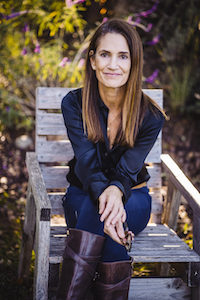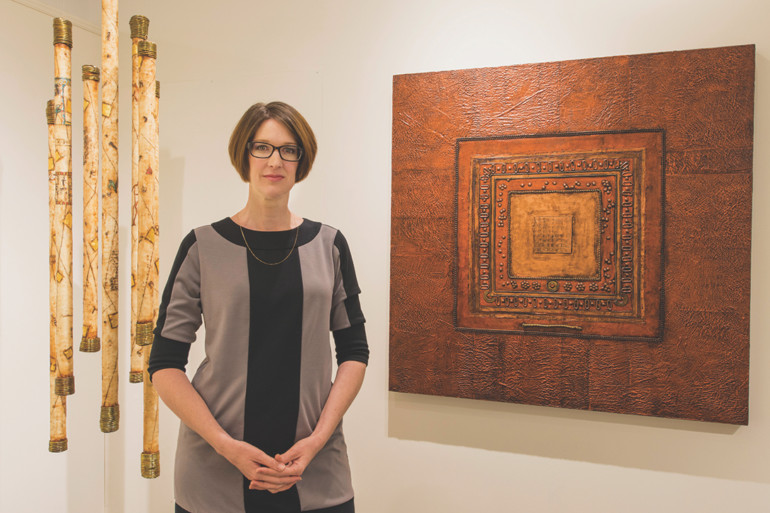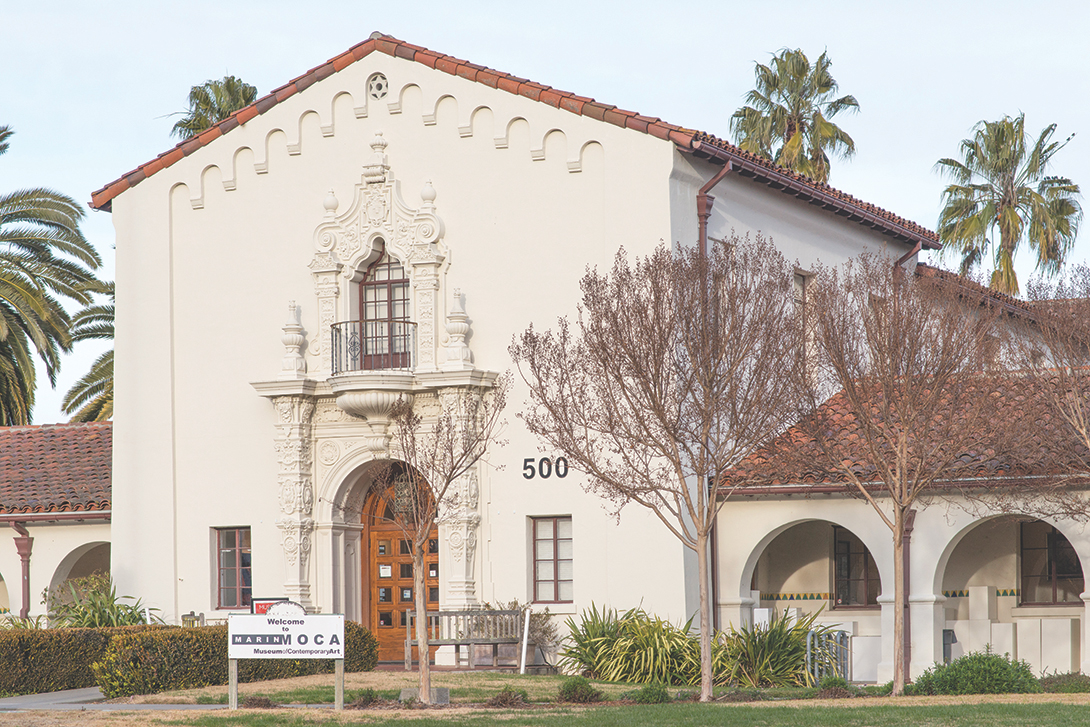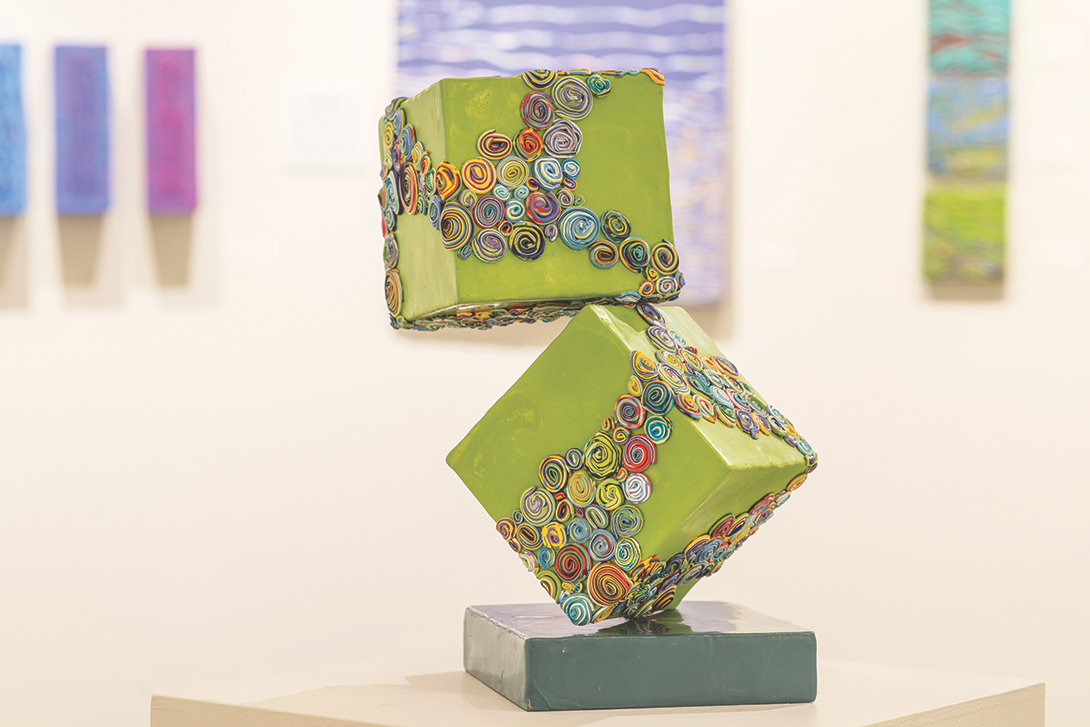AFTER 10 YEARS, the Marin Museum of Contemporary Art (MarinMOCA) is hitting its stride, executive director Heidi LaGrasta says. The history of this tucked-away gem at Novato’s Hamilton Field goes back to 1983, when a group of 11 artists from the College of Marin met in a barn in Indian Valley. They encouraged each other in their creative work as they pursued another ideal: they wanted to cultivate a local arts community and share their understanding of the value art brings to our lives. In 1993, calling themselves the Indian Valley Artists, they set up shop at the former Air Force Administration Headquarters at Hamilton. In the ensuing years, they negotiated a contract with the City of Novato and the Hamilton developer for more studio space, built a gallery and, by 2005, under the new name of Northern California Art League, hosted their first juried national exhibition. In 2007, they became the Marin Museum of Contemporary Art and today, MarinMOCA is much more than a museum; it is a bustling arts hub offering studio space, art classes, open studios, and public arts education events, as well as juried exhibitions.
LaGrasta, a young artist and arts educator herself, took the helm at the museum four years ago. She speaks about the collections, the artists, the panels, the classes, and even the offerings in the gift shop like a proud parent of growing children, encouraging everyone to visit the museum website for news about exhibitions, events, classes and artist studio space.
How would you describe MarinMOCA? There are 50 studios on-site, housing a diversity of artists — from painters to filmmakers to silk artists, everything you can imagine. We have a classroom, a store, multiple gallery exhibitions, a sculpture garden. We host about 15 exhibitions a year, showcasing local and national artists. We also have a program to show emerging artists who need a platform to showcase their work. Then we go to the other side to artists who have made a tremendous impact on the Bay Area art scene, and we call it “Legends of the Bay Area.”
Can you give an example of a “legend”? One example is Robert Hudson, the sculptor, whose work we now have in our garden. And I am really excited that we are going to have multimedia painter Raymond Saunders next year. Saunders has a show here, at LACMA and at the Tate. Incredible! We’ve had Lawrence Ferlinghetti. We’ve had poster artist Stanley Mouse. So local people who are influential in a number of ways, some with a direct Marin County connection. We just had the late Sausalito cartoonist Phil Frank.
Can you tell me a little bit more about Hudson’s work? Yes, we are growing our sculpture garden, and our first contemporary piece is his work called “Spotlight.” Hudson was involved in the funk art movement of the 1960s. He lent us this assemblage sculpture that is whimsical; the more you look at it the more you see. This is an important piece of sculpture and we want to bring more of that caliber of work to our Marin Community. Our motto is, “If you don’t ask, you don’t get.”
Who are your exhibition jurors? We have renowned gallerists from the city jury our exhibitions … people like Catharine Clark, Rena Bransten, Jack Fischer — these wonderful contemporary art gallery owners bringing their perspective here to Marin. For our Fall National Juried Exhibition, we had juror Susan Snyder, of Caldwell Snyder Gallery in San Francisco, who chose 51 artists from 31 states. We change exhibits every five weeks, so there is a diverse calendar. In our last exhibition, we had cuts of beef made out of fuzzy fabric, and we had a giant pink couch that looked like it was out of a horror movie, but then we also have gorgeous plein air paintings, and it’s just so much a slice of the contemporary art scene.
Is there a challenge for a bedroom county like Marin, located next to San Francisco and a host of world-class art venues, to have its own contemporary art museum? We are unusual. We are very fortunate to have those institutions next to us, and what we have at MarinMOCA is different. The caliber of work here is as high, in many cases, as what you might see in the city, but we are a much more intimate venue. The well-known artists who are here, you can see them in the city, but here you have a more intimate, welcoming space. There’s a warmth to the organization. Also, the aspect of the museum where the artists are giving back sets us apart. Our 160 artist members contribute volunteer time every month, giving their time to mount exhibitions, run events, provide pieces for the store and just make the whole thing run — a kind of a hybrid art center and museum. And we offer free admission.
What are some of your more innovative programs? We have a program in partnership with Teamworks for one-on-one mentoring of at-risk girls who are on probation in the juvenile justice system. Artists mentor these girls and give them a focus and a skill, something they can excel at and feel positive about in their life. A few years ago the Prison Arts Project was here and we showcased the artwork of prisoners from San Quentin. We will highlight other organizations that are using art in transformative ways. Cedars of Marin has been here, the Hamilton Wetlands Restoration Project, and most recently Recology, a San Francisco group creating art from entirely recycled materials from the dump.
What is your vision for the future of the museum? We want to expand on our outreach programs. We are in the middle of our first Artist in Residence program. Oakland artist Luis Garcia is doing work around cross-cultural connections — painting, mixed-media, altars, and mask-making. He holds workshops and this is in line with our mission to give an artist an opportunity to work on his craft and also create an element of community connection and benefit. Classes come on field trips, and we host panels. We want to grow these programs — for schoolchildren and all ages — to make contemporary art more accessible. People go to museums to view contemporary art and are not sure how to access it, so we are helping to contextualize it and make it a more rewarding experience.
This article originally appeared in Marin Magazine’s print edition with the headline: “Heidi LaGrasta”.

Kirsten Jones Neff is a journalist who writes about all things North Bay, with special attention to the environment and the region’s farmers, winemakers and food artisans. She also works and teaches in school gardens. Kirsten’s poetry collection, When The House Is Quiet, was nominated for the Northern California Book Award, and three of her poems received a Pushcart nomination. She lives in Novato with her husband and three children and tries to spend as much time as possible on our local mountains, beaches and waterways. For more on her work visit KirstenJonesNeff.Com.




